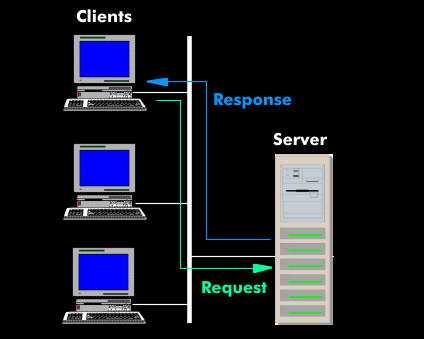server message block (C/S) (SMB)
Server Message Block (SMB) is a client- server protocol with which files, directories, printers and other resources can be shared over a network. The SMB protocol was documented as early as the mid-1980s by IBM and published a few years later by Microsoft/Intel as the Microsoft Networks document. After that, the SMB protocol was consistently developed further by Microsoft and other companies. Since"Windows for Workgroups" it is used by Microsoft on all Windows platforms.
Server Message Block works with its own network file system and is therefore independent of the server's file system. During communication, the client makes a request to the server, which responds with a response. The server provides the requesting client with the desired resources such as printers, programming interfaces, directories or other resources. The SMB client can transmit commands to the SMB server, similar to the File Transfer Protocol it supports interactive data exchange, printer sharing and printing, and can contribute to troubleshooting.
Clients are connected to the server via the LAN Manager, NetBIOS, NetBEUI or the Internetwork Packet Exchange Protocol( IPX) or the Sequenced Packet Exchange Protocol( SPX). In the case of NetBIOS, this can be transferred via NetBIOS over TCP/ IP( NBT), which is the NBT version of Common Internet File System( CIFS), or via DECnet. As soon as a connection between client and server is established, the client sends SMB commands over the network to the server which open up the desired possibilities.
A free implementation of this protocol for Linux, for example, is offered under the name Samba.

